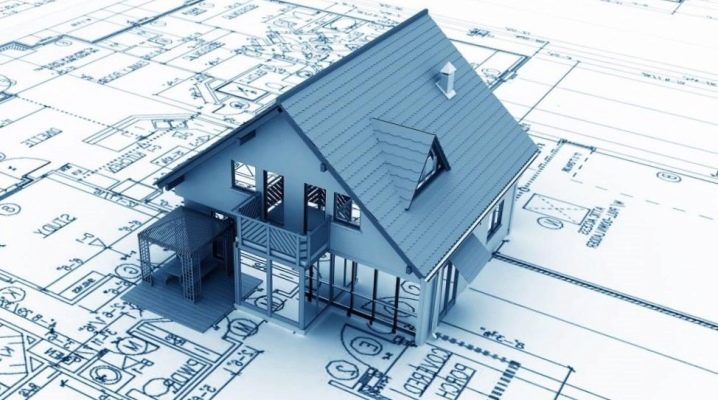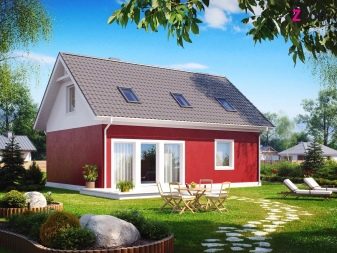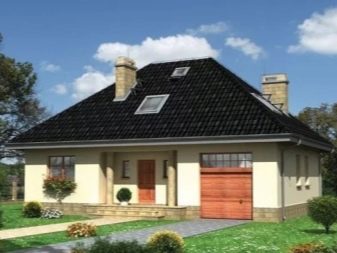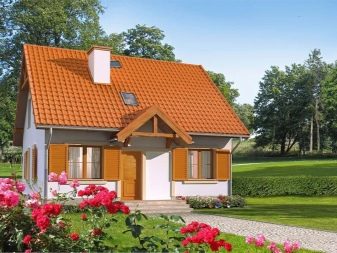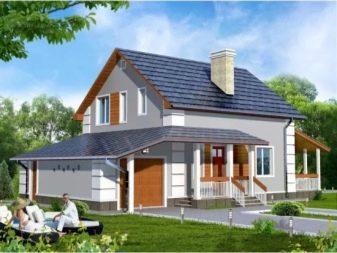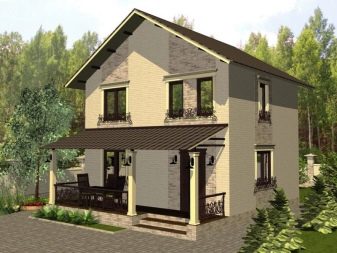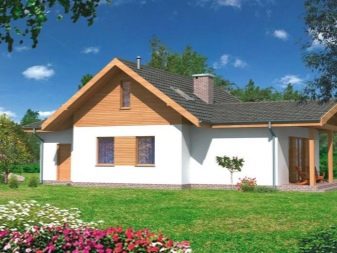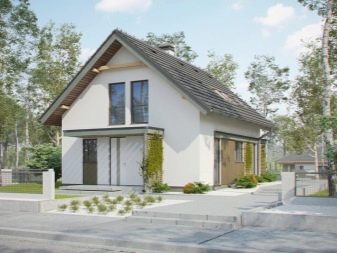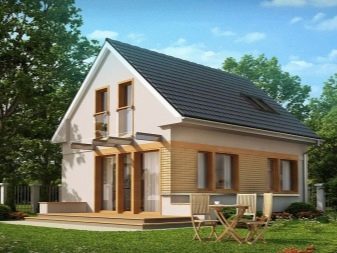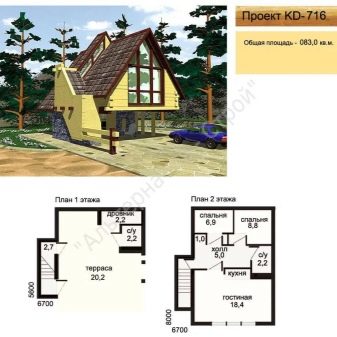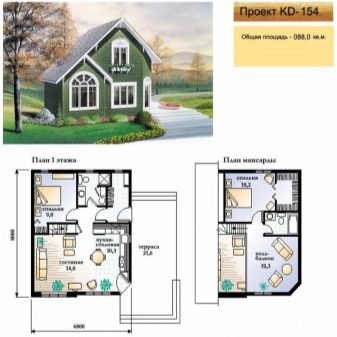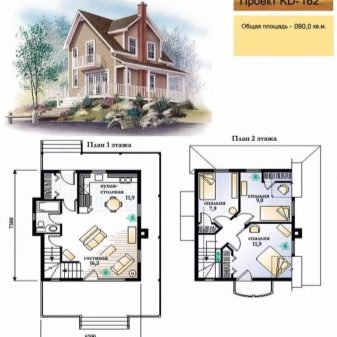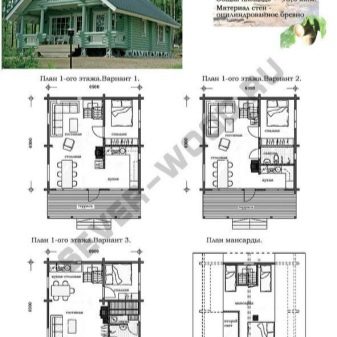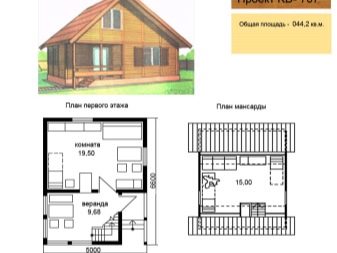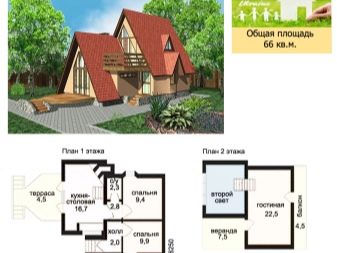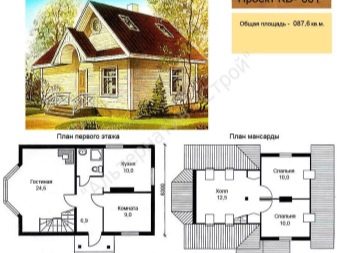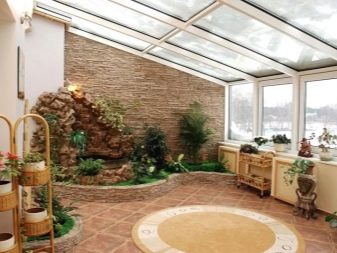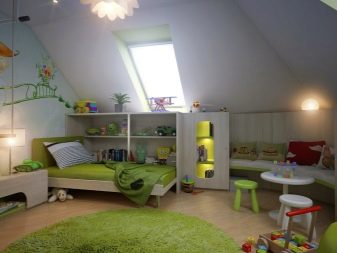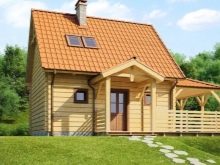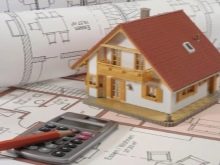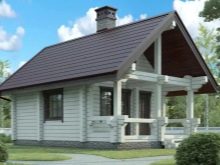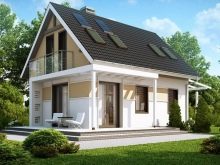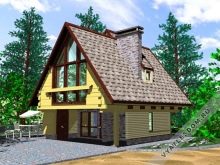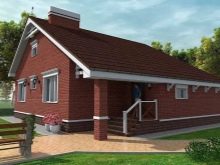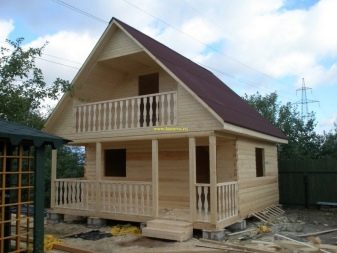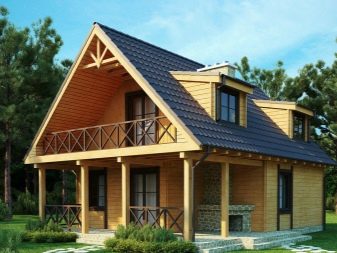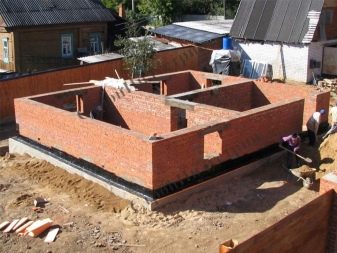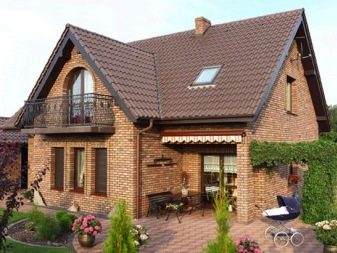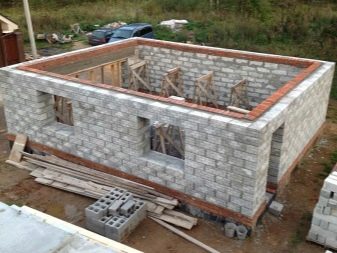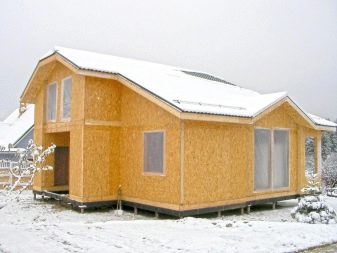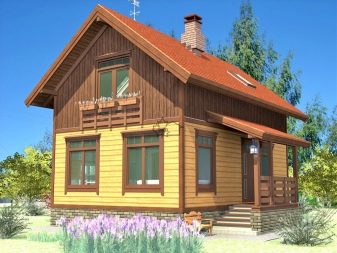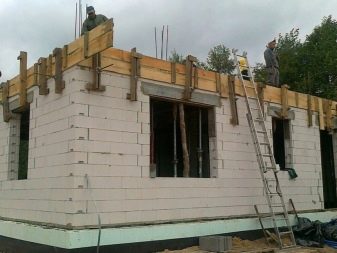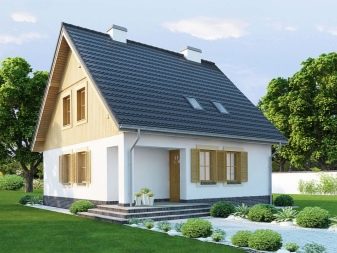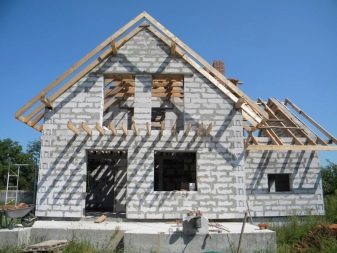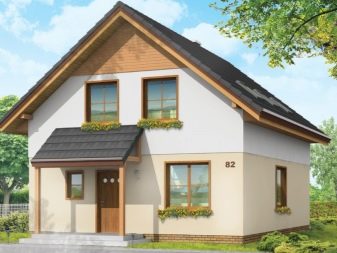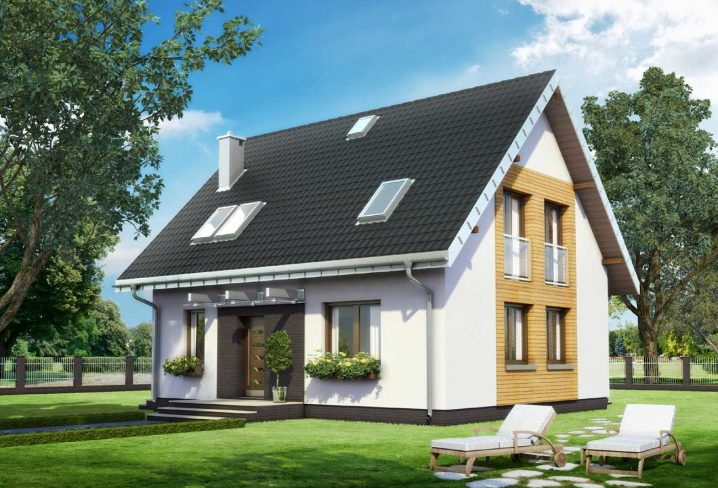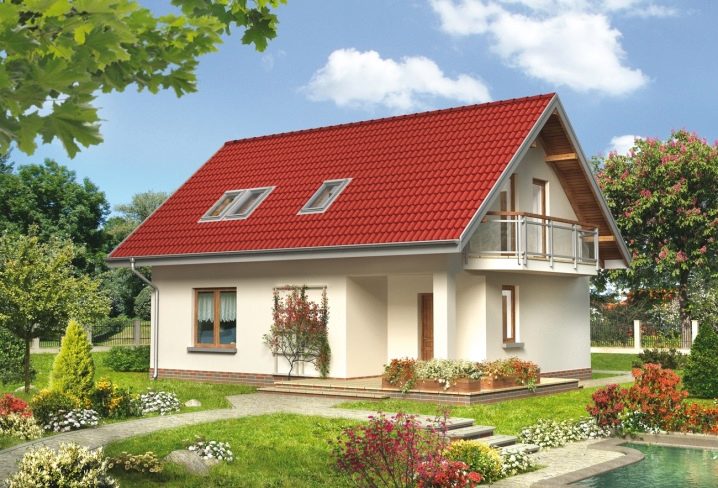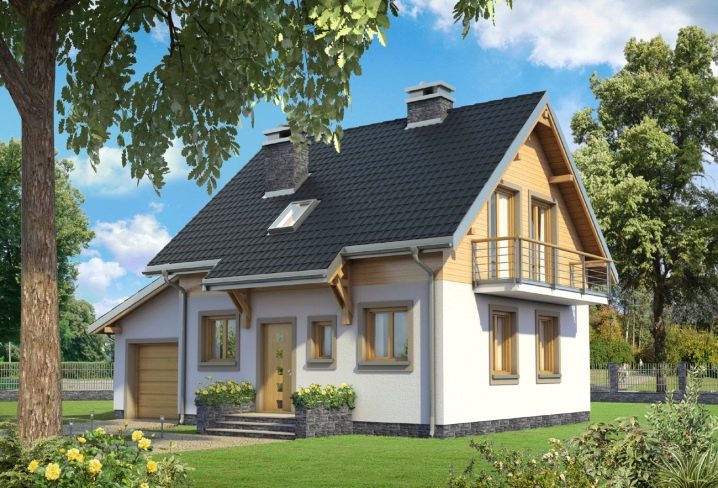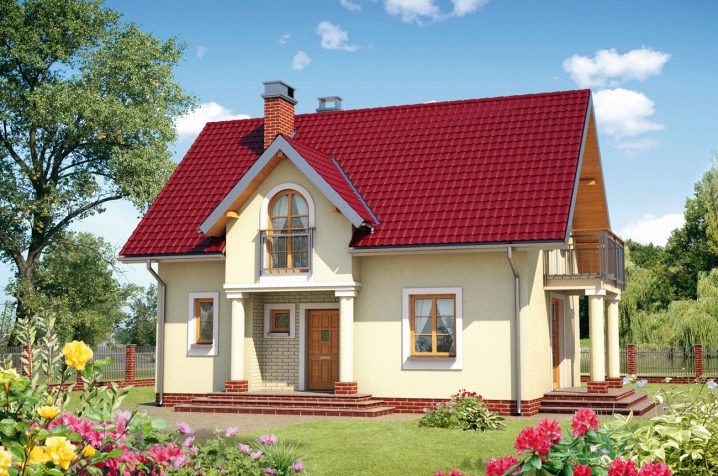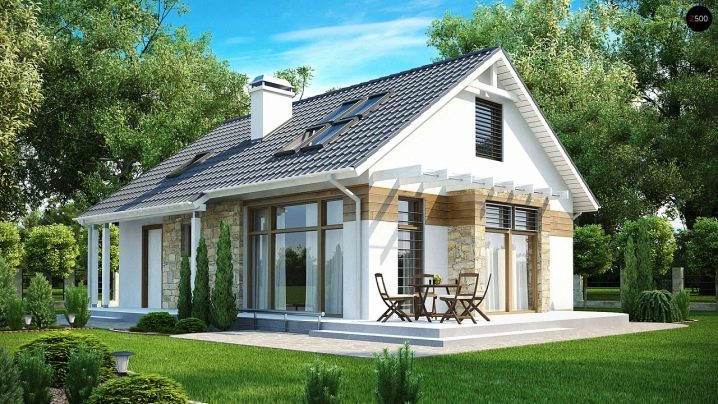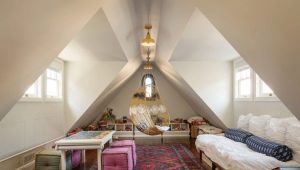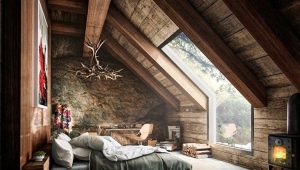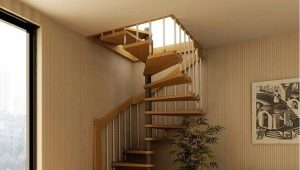Projects of houses with attic up to 100 m2
Houses with a loft are now at the peak of their popularity. This factor is due not only to the external beauty of the structure, but also excellent functionality. There is no need to use the attic room for storing unnecessary things, you can turn this place into a cozy recreation area, bedroom or living room, thereby increasing the usable area of the house.
There are a lot of advantages in the construction of small houses: building a house with a small area is much simpler and cheaper, they are easy to operate and require less time and effort for maintenance and heating.
Special features
House designs with an attic up to 100 m2 are distinguished by their compactness and convenience. The area of this house is not too small, but not large. Thus, you can organize a comfortable layout of the house, designed for a small family (for 4-5 people). It will contain all the necessary facilities for a comfortable life, but there is no surplus.
The advantages of building a small house include the high speed of construction work and the possibility of erecting buildings on various grounds.
By itself, a house with an attic looks attractive and respectable, but in order to enhance these impressions, you can also equip an attic with access to a small terrace or attach a porch with a veranda on the first floor.
You should think in advance where and how wiring and other communications will be located on the attic floor. It is necessary to take care of the illumination of the attic. For these purposes, it is desirable to use special windows that are resistant to bad weather. If you can not make a terrace - you can install high windows that will make the room more comfortable and spacious.
The cost of building houses up to 100 m2 is relatively small, which gives a good opportunity for many to have their own home. In addition, it is possible to finish the attic a little later, but first completely build and equip the first floor.
In this case, at the time of foundation construction, it is necessary to consider that the attic also gives a small load on the base of the house,therefore, it is necessary to make the foundation more durable.
Project
The project of the house with an attic, which on average has an area of 80-90 square meters. m., you can make yourself, but, not having special knowledge, it is still better to use the services of specialists.
There are already ready standard projects which can be used. They differ in that they have a standard layout, which makes rational use of square meters and eliminates the possibility of the formation of walk-through rooms.
The most popular project is the layout of the premises:
- on the first floor are the entrance hall, living room, kitchen, dining room, bathroom and two bedrooms;
- in the attic there is a small hall, bedroom and study.
The number of bedrooms, bathrooms or other rooms can be added or removed depending on the needs of the family. One of the best projects is also considered the layout with a large and well-lit living room in the attic.
Other common project options:
- first floor: entrance hall, kitchen, dining room, large living room; attic: a small hall, two bedrooms and a bathroom;
- first floor: entrance hall, kitchen, dining room, living room, bedroom, bathroom; attic: a small hall, bedroom and bathroom;
- first floor: the same main premises, but with two bedrooms and a bathroom; attic: two bedrooms and a small hall.
To create an individual and unique home design, you can order a project from specialists from scratch, which will take into account all wishes.
For an interesting use of mansard squares, you can place a winter garden on this floor, and for the useful, you can equip a spacious children's room.
If possible, you can finish the terrace. In the summer, it will be a great place to rest, especially if you decorate it with the help of potted flowers or other plants. Undoubtedly, such a terrace will delight their appearance.
You can also include verandas or balconies in your project. They, too, will bring their own zest to the design of the building.
If necessary, the presence of a garage can be attached to the house or at a distance. The advantage of the first option is that due to its connection with the house, such a garage will be warm enough and without additional heating, and you can get into it from the house without going outside.
Materials
The most common materials for building houses are:
- brick, natural stone;
- tree;
- foam blocks (cellular concrete);
- SIP-panel;
- gas silicate;
- aerated concrete.
The demand for brick and wooden houses does not change. The quality of buildings from these materials is tested by a large amount of time. Houses built of profiled timber have a high level of thermal insulation, and also do not require additional finishing of the front part, since the tree has a beautiful and even surface. But despite this, it will be necessary to ensure the protection of this material from destruction using antiseptics.
Brick houses they are distinguished not only by various design solutions and the way of laying, but also by high strength and durability. The average service life is 100-150 years (other materials do not have such indicators). The brick has excellent resistance to adverse weather conditions, frost-resistant and environmentally friendly. But with these advantages, one drawback follows - a high load on the foundation. These features are inherent in natural stone.
Foam blocks have a structure that is able to maintain a comfortable indoor microclimate due to good air circulation and heat retention.Building a house of foam blocks does not require the use of special equipment and does not create a high load on the foundation, due to the low weight of the material.
Building from CIP panels characterized by simplicity and produced by Canadian technology. Such houses are built with the help of frame structures rather quickly and do not create a high load on the foundation, they are durable and stable, do not require a complex heating system, since they retain heat well. But of the minuses, it is worth noting the poor fire resistance and the need for good ventilation.
Houses from gas silicate blocks slightly inferior in performance to other materials. The material itself is fragile: because of this, building more than two floors is undesirable. Care must be taken to protect against moisture, which can destroy this material. At the same time, gas silicate has a low weight, construction occurs fairly quickly. No need for additional ventilation - the structure of the material maintains an optimal microclimate in the house.
Aerated concrete is an environmentally friendly material that retains heat in the room, so that it is not necessary to additionally warm the walls. It has low weight and low cost. Cons of aerated concrete houses:
- complexity in construction and further finishing;
- for fastening shelves, TVs, you must use special fasteners, because the usual fasteners will not be held securely;
- for finishing it is best to use plaster solutions containing gypsum;
- low level of frost resistance.
A variety of materials can be used as a finish for a built house: facade paints, siding, stone, decorative plaster, sandwich panels, and porcelain stoneware.
Beautiful examples
An example of a simple and concise house with a mansard. The outer side of the windows of the first floor is decorated with flowers; small balconies lead from the attic. Attic is well lit with special windows in the roof.
The design of this house is a bit like the previous one, but here from the attic there is access to the terrace and the porch of the house is wider.
This example shows a garage that is attached to the house. There is also a terrace and a well-maintained porch.
The design of this house has a solid appearance, thanks to interesting forms in the architecture of the building. On the porch are two columns that hold the terrace. Attic windows have a rounded shape.
This house does not have a terrace, but its design looks stylish, thanks to the interesting beautification of the porch around the house, green areas and high windows, which are perfectly combined with the decoration under the stone and wood.
On the project of the house of economy class, see below.
